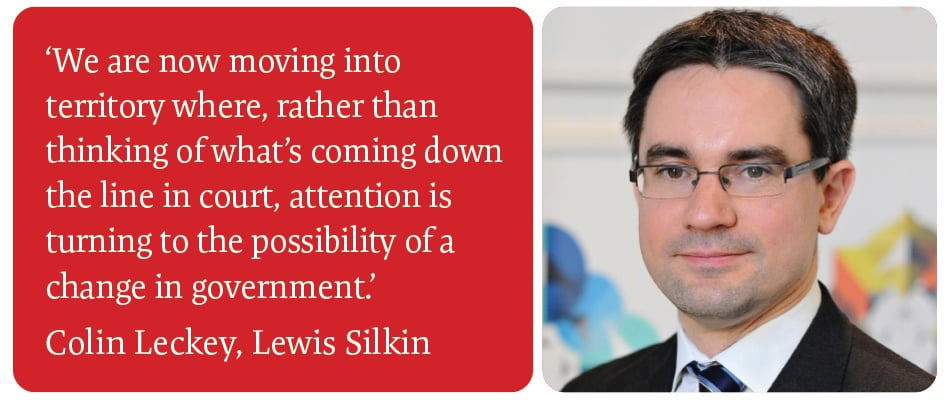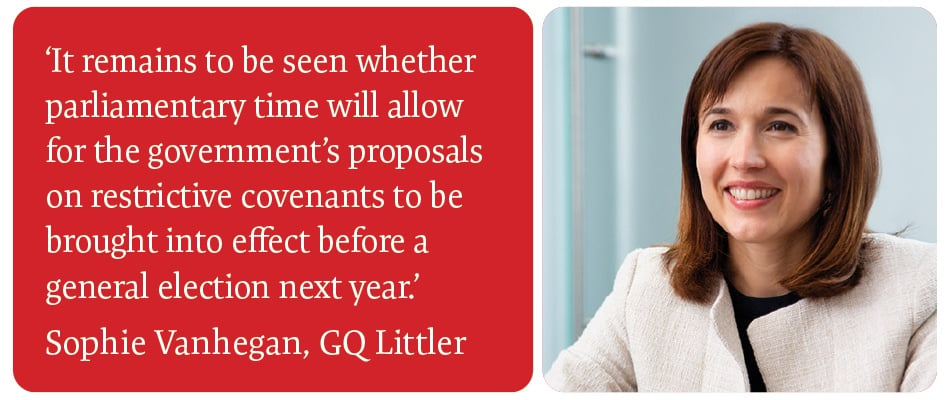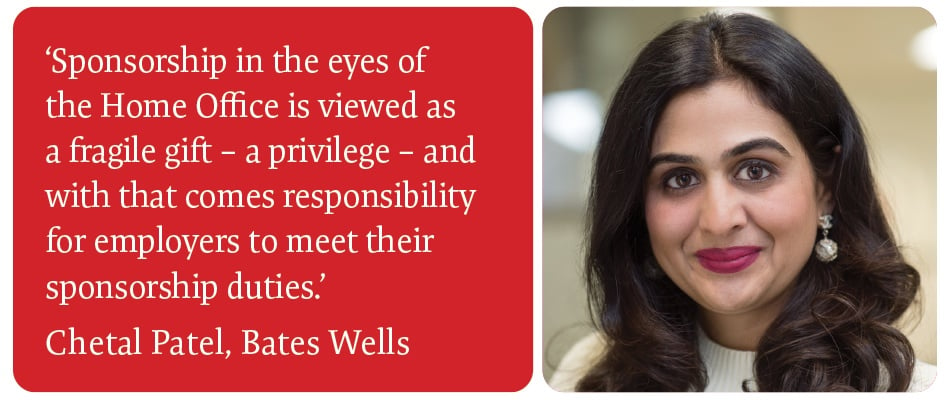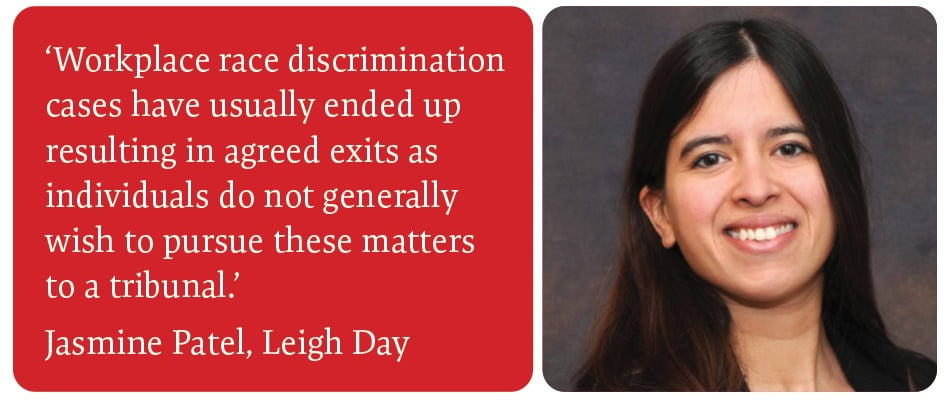A dynamic and highly active space, employment law is on the cusp of a changing world. The economic climate, new technology, government policy and recent case law precedents have ensured that employment is one of the busier practice areas in 2023. Across litigation and non-contentious work, change is in motion, and the spotlight on this area will continue to grow as the 2020s progress.
Restructurings and redundancies
Corporate employment work is tied to wider economic trends and is often an area in which the major market changes are felt first-hand. Hit by rising supply costs and inflationary pressure, companies are facing untenable overheads and, according to the Office of National Statistics, redundancies are reaching levels comparable to the middle of the pandemic. In March 2023, the ONS reported that the number of employers proposing 20+ redundancies was 90% higher than the same time the previous year. Tim Leaver, an employment partner at Herbert Smith Freehills in London, comments: ‘We have seen a resurgence in outsourcing and particularly offshoring, driven in large part by increasing domestic costs. That activity is translating, in the employment space, into an increase in the number of clients seeking assistance with managing complex collective redundancies, often across multiple sites and involving multiple trade unions or employee representatives.’
This rising need for holistic, business-wide redundancy advice has seen firms with large and dedicated employment teams well placed to respond as the drive by businesses to cut their costs has brought new factors into the equation too. ‘We are seeing clients taking a critical look at their structure and supply chains to identify rationalisations and synergies,’ Leaver reports. ‘The impact of emerging tech – particularly AI and robotics – is accelerating the pace at which rationalisations can deliver significant cost savings.’
The possible effects of increased AI usage in the employment space remain speculatory, but, as Leaver observes, ‘the challenge facing employers now is how to manage and support their people through that transition’. As of July 2023, the TUC has called for draft legislation to regulate the use of AI in hiring, firing and setting work conditions and this is expected to be an area of significant development in the coming years.
Trade unions and industrial relations
The economic backslide prompting the spike in redundancies has also awakened an older consideration. Once viewed as ‘very traditional, old fashioned employment law – a remnant of the 70s’, trade union and industrial relations work has, in the past year, seen what Jonathan Tuck, partner at Baker McKenzie, describes as a ‘massive uptick’. With recent widespread and widely publicised strike action in the rail, health, and education sectors, ‘it really is absolutely necessary to have someone who understands this area on the team’, observes Lucy McLynn, a partner and employment practice head at Bates Wells.
As well as the surge in union negotiation work, the area is also rapidly developing in terms of case law and legislation, with the courts considering interpretations of key provisions in the Trade Union and Labour Relations Consolidation Act.
‘The two big legal issues in the trade union space over the last 12 months,’ says Tuck, ‘have been the fallout from the Kostal UK v Dunkley case concerning the restriction on employers making offers directly to employees and bypassing the unions, and Mercer v Alternative Future Groups – which we are expecting in the Supreme Court later this year – relating to subjecting workers to detriment if they take part in trade union activities; and specifically on whether this provision extends to industrial action. Mercer is big for employers but bigger for the unions, as they see this as a real afront to the right to strike.’
Unions have also locked horns with the government before the courts, with the repeal of the ban on allowing the use of agency workers to replace striking employees challenged by 11 trade unions and found to be unlawful in the High Court on 13 July 2023. The government is also attempting to introduce minimum service levels in the industries seeing high levels of strike action, with this legislation currently at amendment stage before the House of Lords. Tuck reports that this policy has been ‘massively criticised’ and expects a challenge by the unions should it pass through the Lords.
Today’s union work is not only focused on the public sector and privatised industries; it is also on the rise in the private sector too. Tuck notes that: ‘the causes are the same – inflation and the rising cost of living – but it is manifesting in a different way, with higher levels of pay negotiations as opposed to strikes’.
One particular area of rapid growth in union presence is the tech industry, which Tuck links to large-scale redundancies in this space. Tech companies are taking a ‘tactical approach’ to unions, says Tuck, opting for ‘some form of limited recognition, as constructive relations are more beneficial long term’. Platform model businesses, too, have seen mounting union strength, with Colin Leckey, a partner at Lewis Silkin, identifying ‘start up unions that have targeted the gig economy’ as a rising force.
Across the board it is clear that industrial relations work is back, and very likely here to stay.
Worker status cases
Unions have also been a key driver of the spate of major worker status litigation over the last five years, with the Supreme Court cases involving Pimlico Plumbers and Uber making headlines in 2018 and 2020. A new high-profile Supreme Court decision in this area is now awaited regarding Deliveroo.
Unlike numerous other platform-based companies, though, Deliveroo has defeated the legal challenge at every level below the Supreme Court. Leckey points to ‘Deliveroo riders’ unfettered right of substitution’, backed up by ‘genuine evidence that this was exercised in practice’, as key to the company’s ability to defend the claim so far.
As in Uber v Aslam, judges will look beyond the wording of a contract at the actual nature of the relationship, so it is essential, according to Leckey, that the wording is ‘really reflective of reality’. Avoidance of contractors receiving worker status and associated statutory rights goes ‘to the heart’ of the platform model, and Leckey suggests that new businesses entering the sector develop a ‘robust, workable, defensible model’ and ‘remain aware of the ramifications that any tweaks to the business structure might have in terms of future worker status claims’.
When asked if he expects worker status litigation to be a continuing feature of contentious side employment work, Leckey says ‘we are now moving into territory where, rather than thinking of what’s coming down the line in court, attention is turning to the possibility of a change in government and Labour’s current commitment to practically erase the difference between workers and employees and give ‘day one’ employment rights to everybody’. The detail of what this means in practice is, as yet, unclear, but it means the landscape could be set for significant change.
Restrictive covenants
Another key focus of litigious work in the employment space has been the enforcement of restrictive covenants and other non-compete clauses, as well as claims concerning the misuse of confidential information.
Sophie Vanhegan, a partner at GQ Littler, attributes this to ‘businesses looking to protect themselves from unfair competition in a challenging economic climate’.
The government, though, has indicated a move to introduce a ban on restrictive covenants lasting beyond three months, in an attempt, Vanhegan explains, ‘to encourage innovation and economic growth’.
There has been speculation on what impact this policy would have if introduced, with some lawyers suggesting that longer notice periods could replace the covenants.
The issue of longer notice periods as restraints of trade has already resulted in litigation in certain sectors, with Red Bull taking head of aerodynamics Dan Fallows to court over a notice period breach in the motorsport field.
However, Vanhegan states: ‘It remains to be seen whether parliamentary time will allow for the government’s proposals on restrictive covenants to be brought into effect before a general election next year, so many employers are adopting a wait and see approach before updating their staff employment contracts.’
The general, prevailing view is that the government has more pressing concerns than forging ahead with implementing this change, but a rapid spike in employment work is to be expected if the wheels are set in motion.
Business immigration
While economic conditions have driven rising rates of redundancy in many areas, labour shortages in key sectors have brought about an uptick in business immigration, which has been a busy area for law firms in 2023.
‘Changes to immigration laws and processes are seldom swift and may arrive with little or no advance notice,’ says Jurga McCluskey, partner and head of Deloitte’s UK and European immigration practice. ‘This requires yet more flexibility from employers, who must bridge workforce gaps and communicate with internal and external stakeholders clearly and quickly.’
As more businesses apply for sponsorship licences, Chetal Patel, a partner and head of immigration at Bates Wells, observes that ‘sponsorship in the eyes of the Home Office is viewed as a fragile gift – a privilege – and with that comes responsibility for employers to meet their sponsorship duties’. Ultimately, says Patel, employers must be mindful of the fact that ‘immigration compliance is central to the Home Office agenda’ and need to ‘continue to test their systems’ to ensure standards are met.
Senior investigations
Investigations into the conduct of senior employees have come to public attention in the past year or so due to a spate of very high-profile investigations within the media industry and political sphere. In practice, senior investigations work has formed a consistent and growing portion of the workload of firms providing employment services across the market, particularly those with clients in the financial services and other regulated industries.
Investigations are not statutorily defined, which has allowed for the growth of specialist investigations practices within employment teams to help clients in structuring and tailoring the process and advising on the outcomes, with barristers increasingly engaged to carry out the fact-finding aspects.
Karen Baxter, head of the investigations and regulatory practice at Lewis Silkin, observes: ‘The Me Too and Black Lives Matter campaigns were a large part of the shift in favour of investigations, as they led to a much closer scrutiny of how organisations respond to allegations.’
Hina Belitz, partner at Excello Law, adds that companies have also been more inclined to investigate because ‘in terms of public relations, investigating a senior executive, in the face of difficult allegations, allows an organisation to confidently assert that they appropriately addressed and investigated matters’.
Regulators, too, including the Financial Conduct Authority and Solicitors Regulatory Authority, are taking keen interest in investigations, due to the possibility of findings that their rules and standards have been infringed. As a result, partners predict that investigations work is only going to increase and will form an increasingly core part of employment work.
Workplace race discrimination
According to Jasmine Patel, an associate at Leigh Day, another trend in employment law is a recent ‘uptick in individuals seeking advice regarding race discrimination at work’.
This is an ongoing trend, with a 2022 TUC survey finding that one in four workers from a minority ethnic background had experienced racial discrimination at work, with around 8% of those quitting their jobs as a result.
‘These claims can be quite difficult to prove,’ Patel reports, ‘as often no overt racist behaviour or comments have been made by the employer. Instead, individuals point to ongoing negative and unreasonable treatment by their employer which they feel can only be explained because of their race. These cases have usually ended up resulting in agreed exits as individuals do not generally wish to pursue these matters to a tribunal.’
As with the increased willingness of individuals to come forward regarding sexual harassment, Patel links the rise in discrimination allegations to ‘a better understanding of employment rights’ on the part of employees. This trend, as with the rise in senior investigations, is a signal to employers to conduct reviews of their workplace culture and has already prompted many to do so.




